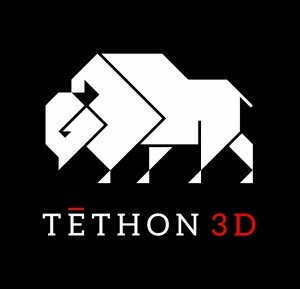 Back in 2014, we wrote about Omaha’s first ceramic printing startup, Tethon 3D. A year later, we’re proud to report that this Nebraska owned and operated company is not only flourishing, but may even be a piece in the puzzle to saving oceanic ecosystems. They’ve applied for a patent to create stronger-than-ever ceramics and designed a new incarnation of the cow for Big Omaha 2014. In other words, they’re doing just fine.
Back in 2014, we wrote about Omaha’s first ceramic printing startup, Tethon 3D. A year later, we’re proud to report that this Nebraska owned and operated company is not only flourishing, but may even be a piece in the puzzle to saving oceanic ecosystems. They’ve applied for a patent to create stronger-than-ever ceramics and designed a new incarnation of the cow for Big Omaha 2014. In other words, they’re doing just fine.
First, a brief recap: Tethon 3D was founded by Dr. James and Karen Linder in conjunction with an assistant professor at Bowling Green University, John Balistreri. “We thought ceramics had a lot of potential because of the properties they have,” Jim told the . “Inert, heat resistant, pretty, wear-resistant, you can control the density. You can actually modify them in many ways. The ability to create a ceramic object in a very complex shape can be important for manufacturing as well as art.” So, along with their technical operations manager Greg Pugh, the company began their commercial operations in March 2014, confident that no other company has ceramic powder as close to true ceramic as they have.
One of Tethon 3D’s newest projects pairs their ceramic creations with a Massachusetts oyster farmer hoping to reboot oyster populations in Cape Cod. If you’ve ever needed to be convinced of the applicability of 3D printed materials, this project should be proof enough. Patrick Woodbury, founder of the Woodbury Shellfish Company, is working with Tethon to create proto-reef structures that will maximize oyster growth and survival. “Utilizing ceramic 3D printing allows us to create custom designs that would be difficult to mold or make by hand,” . Because ceramic is composed of naturally occurring clay, it is safe for the environment and can be stable in salt water, fresh water, or buried in earth. So far, the project is in preliminary phases, but is performing well after three months underwater.
In addition to their East Coast projects, reports that the company has filed a US utility patent for a 3D printer design that will improve the strength of 3D printed ceramic exponentially. Although there’s only a relatively small market for 3D printed ceramics (it’s tricky to deal with, and requires glazes and a high-temperature kiln to set), Tethon’s new 3D printer design incorporates a compression plate that actually simulates hand-building traditional ceramic products. “Physical compression is essential for increasing the strength of clay and the resulting ceramic objects. We thought about what gives clay its strength in manufacturing today, and how we can use these valuable techniques in 3D printing,” Pugh notes.
If you’re intrigued by the idea of ceramic 3D printing and want to learn more, you can attend a workshop that Tethon 3D hosts on location—find out more information . It’s exciting to have a company in Nebraska on the cutting edge of an industry like Tethon is for 3D printing, and we can’t wait to see what else they have accomplished when we check in again next year.
 Official Nebraska Government Website
Official Nebraska Government Website
